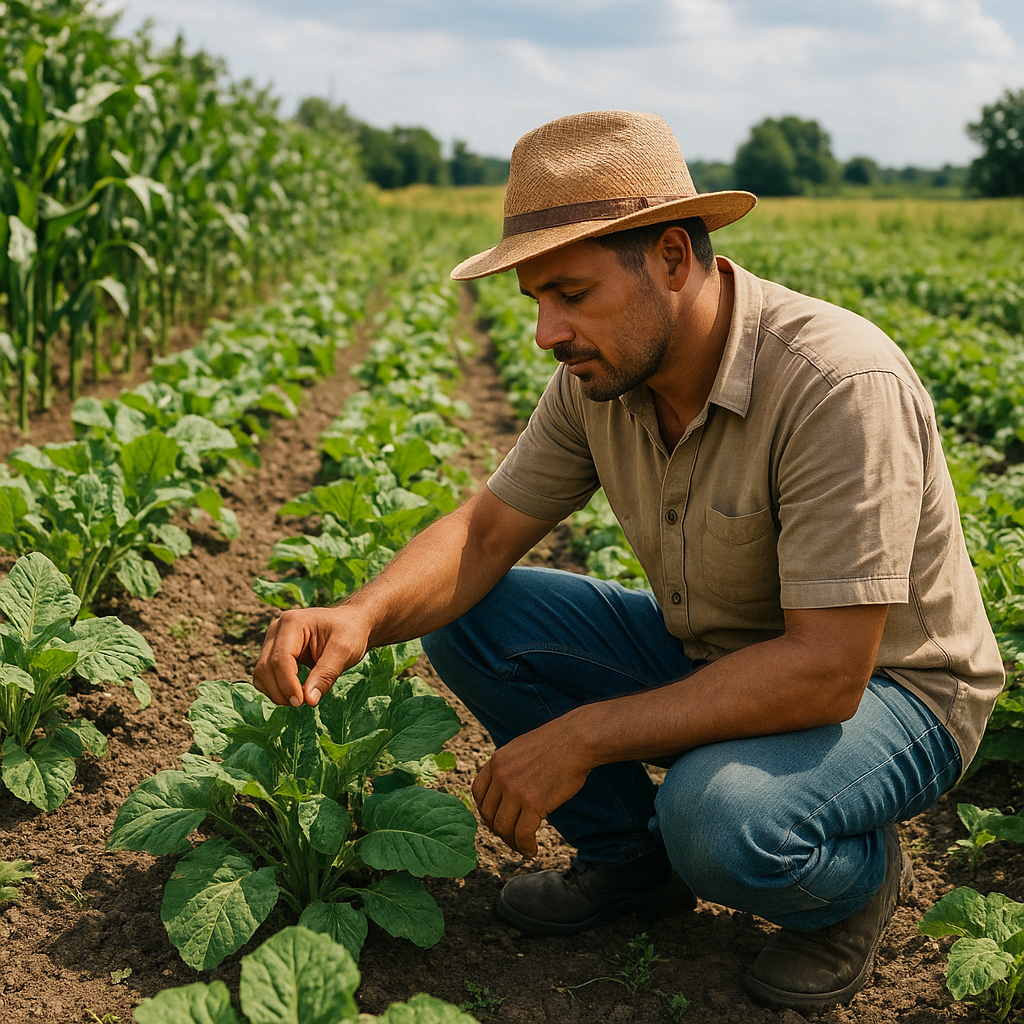
Organic farming has gained significant traction in recent years, with many farmers and consumers seeking sustainable and environmentally friendly alternatives to conventional agricultural practices. One of the most challenging aspects of organic farming is weed control, as it requires methods that do not rely on synthetic herbicides. This article explores effective organic weed control methods that have proven successful in various farming contexts.
Understanding the Challenge of Weed Control in Organic Farming
Weeds are a persistent problem in agriculture, competing with crops for nutrients, water, and sunlight. In conventional farming, chemical herbicides are commonly used to manage weeds, but these can have negative environmental impacts and may not align with the principles of organic farming. Organic farmers must therefore employ alternative strategies to manage weeds effectively.
Organic weed control is not just about eliminating weeds; it’s about managing them in a way that minimizes their impact on crop yield and quality. This requires a comprehensive understanding of weed biology, ecology, and the specific conditions of the farm. Successful organic weed control often involves a combination of methods tailored to the unique challenges of each farming operation.
Mechanical Weed Control Techniques
Mechanical weed control involves the physical removal or disruption of weeds using various tools and equipment. This method is one of the most direct approaches to managing weeds organically and can be highly effective when implemented correctly.
Tillage and Cultivation
Tillage is a traditional method of weed control that involves turning the soil to uproot weeds. While effective, it must be used judiciously to avoid soil erosion and degradation. Cultivation, on the other hand, involves using tools like hoes, harrows, and cultivators to disturb the soil surface and remove weeds. Timing is crucial, as cultivation is most effective when weeds are small and before they have established deep root systems.
Mulching
Mulching is another mechanical method that involves covering the soil with organic or inorganic materials to suppress weed growth. Organic mulches, such as straw, wood chips, or grass clippings, not only inhibit weeds but also improve soil health by adding organic matter. Inorganic mulches, like plastic or landscape fabric, can be effective but may not be suitable for all organic systems due to their environmental impact.
Biological Weed Control Methods
Biological weed control leverages natural processes and organisms to manage weed populations. This approach can be an integral part of an organic weed management strategy, offering sustainable and environmentally friendly solutions.
Cover Crops
Cover crops are planted primarily to benefit the soil rather than for harvest. They can suppress weeds by outcompeting them for resources and by providing a physical barrier that prevents weed seed germination. Common cover crops include clover, rye, and vetch, which can also enhance soil fertility and structure.
Grazing
Integrating livestock into crop systems can be an effective way to control weeds. Animals such as sheep, goats, and cattle can graze on weeds, reducing their prevalence. This method requires careful management to ensure that livestock do not damage crops or compact the soil.
Cultural and Preventative Weed Control Strategies
Cultural practices involve modifying farming techniques to create conditions that are less favorable for weed growth. These strategies are often preventative, aiming to reduce the likelihood of weed establishment and proliferation.
Crop Rotation
Crop rotation involves changing the types of crops grown in a particular area from season to season. This practice can disrupt weed life cycles and reduce the buildup of weed populations. By rotating crops with different growth habits and competitive abilities, farmers can naturally suppress weeds.
Planting Density and Timing
Adjusting planting density and timing can also help manage weeds. Dense planting can shade out weeds, reducing their ability to photosynthesize and grow. Similarly, planting crops at optimal times can give them a competitive advantage over weeds, allowing them to establish more quickly and outcompete unwanted plants.
Innovative Organic Weed Control Technologies
Advancements in technology have opened new avenues for organic weed control, providing farmers with innovative tools and techniques to manage weeds more effectively.
Flame Weeding
Flame weeding uses propane-fueled torches to apply direct heat to weeds, causing their cells to burst and die. This method is particularly useful for controlling weeds in row crops and can be an effective alternative to chemical herbicides. However, it requires careful application to avoid damaging crops and is best suited for dry conditions.
Soil Solarization
Soil solarization involves covering the soil with clear plastic to trap solar energy, raising the temperature to levels that kill weed seeds and pathogens. This method is most effective in warm, sunny climates and can improve soil health by reducing pest and disease pressure.
Conclusion: Integrating Multiple Strategies for Success
Effective organic weed control requires a multifaceted approach that combines mechanical, biological, cultural, and technological methods. By understanding the specific challenges and conditions of their farms, organic farmers can develop integrated weed management plans that minimize weed impact while promoting sustainable agricultural practices. As research and innovation continue to advance, new tools and techniques will further enhance the ability of organic farmers to manage weeds effectively and sustainably.

